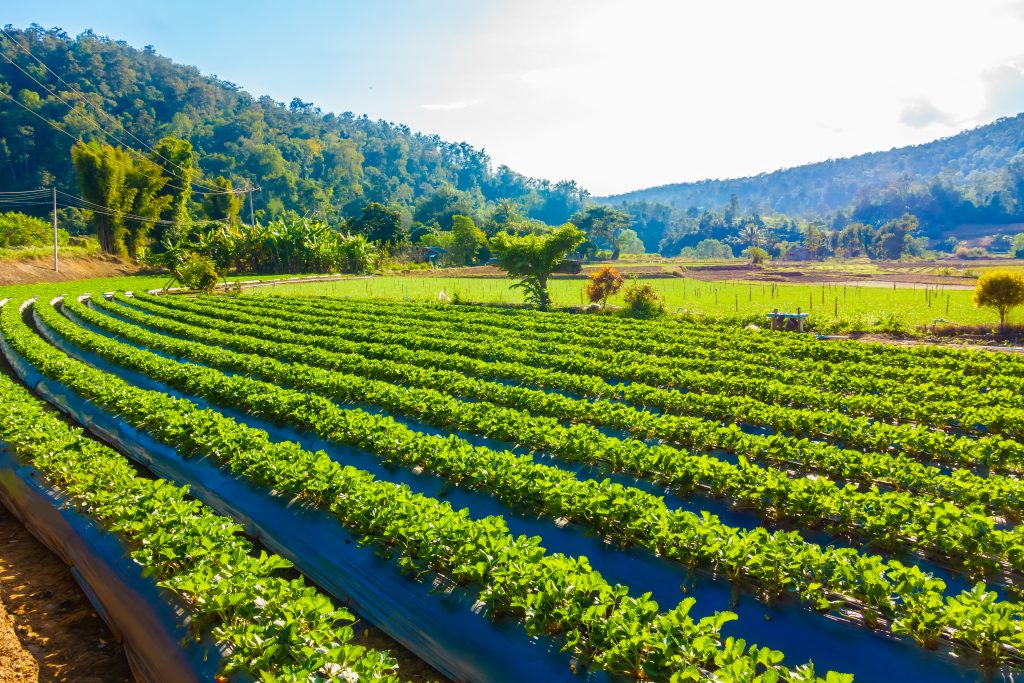Agriculture has been the backbone of human civilization for many years. It has been the foundation of human existence and development for so many years, as it was the first business humans started to do. Agriculture is the art and science that involve the cultivation of plants and rearing livestock for different purposes, primarily food production. With immense development in the sector of agriculture, it has evolved into a complex and diverse system.
To understand this system, agriculture is distributed in different sectors, contributing to global food supply, sustainability, and economic growth. In this article, we will explore the different sectors of agriculture, their significance, challenges, and interconnections.
Primary Agriculture
This sector of farming, also referred to as traditional or subsistence agriculture, is the foundation of the entire agricultural industry. However, it includes the basic farming activities of planting, cultivating, and harvesting crops and raising livestock. Primary agriculture contributes to fulfilling the necessary demand for local food production, helping rural livelihoods, and maintaining biodiversity. However, the sector is facing some challenges, such as limited use of modern technologies, inadequate resources and infrastructure, and climatic risks. Involving modern techniques in this sector will lead to increased productivity and enhanced livelihoods for farmers.
Commercial agriculture
As the name says, this agriculture sector focuses on producing crops and livestock at a larger scale to meet commercial demand and obtain a larger profit as well. To carry out production on a large scale, this sector employs advanced machinery, equipment, and technologies, along with a high amount of capital. Commercial agriculture practices cater to market demand. Factors affecting the production and yield of these sectors are marketing strategies, price fluctuations, supply chains, and changes in farming technologies. This sector majorly contributes to global trade, the economy of the country, and earnings from foreign exchange.
Subsistence Agriculture
Subsistence agriculture focuses on growing crops and raising livestock to fulfil the fundamental requirements of a family or community. In contrast to commercial agriculture, the primary objective in this case is self-sufficiency rather than profit. Subsistence farmers frequently use traditional farming practices and rely on family labor. This industry is common in underdeveloped nations and distant places with limited access to markets and contemporary technologies. While subsistence agriculture promotes local food security, it might leave farmers vulnerable in the face of economic or climatic shocks.
Industrial Agriculture
Industrial agriculture, sometimes known as agribusiness, is distinguished by large-scale, mechanized farming operations that employ cutting-edge technology and practices. Through economies of scale, it seeks to maximize efficiency and production. This industry frequently comprises monoculture, or intensive cultivation of a single crop, as well as animal rearing in small spaces. While modern agriculture has tremendously increased food production, it has also prompted concerns about environmental degradation, biodiversity loss, and animal welfare.
Organic agriculture
Organic agriculture emphasizes ecologically friendly and sustainable farming practices. It avoids synthetic chemicals and genetically modified organisms (GMOs) and focuses on soil health, biodiversity, and ecological balance. Natural fertilizers, crop rotation, and integrated pest management are all promoted in organic farming. This industry has grown in prominence as consumers want healthier, more ecologically friendly products. However, it frequently confronts difficulties due to decreased yields, certification processes, and costs.
Precision Agriculture
Precision agriculture optimizes farming practices at the granular level by utilizing current technology such as satellite images, drones, GPS, and data analytics. Farmers can make educated decisions regarding planting, irrigation, fertilization, and pest management by collecting and analyzing data. This industry seeks to eliminate waste, enhance resource efficiency, and boost yields. Precision agriculture is becoming increasingly vital as the world’s population expands and there is a need to produce more food while using fewer resources.
Horticulture
Fruits, vegetables, nuts, seeds, herbs, sprouts, mushrooms, algae, and non-food crops such as flowers and decorative plants are all grown in horticulture. For maximum plant development and quality, this industry needs specialized knowledge and practices. Horticulture is critical to producing diverse and healthy meals while also contributing to the aesthetic value of landscapes. Horticulture, on the other hand, maybe labor-intensive and weather-sensitive, leaving it vulnerable to market changes.
Aquaculture and Fisheries
Aquaculture is the practice of raising aquatic creatures such as fish, crustaceans, mollusks, and aquatic plants in controlled conditions such as ponds, tanks, or ocean cages. It makes a considerable contribution to world seafood output and helps relieve strain on wild fish populations. Aquaculture, on the other hand, poses questions regarding water quality, disease management, and its possible influence on local ecosystems. Sustainable practices are critical to ensuring aquaculture’s long-term survival.
Agroforestry
Agroforestry is the practice of combining agricultural practices with tree cultivation in order to develop integrated and sustainable land-use systems. This industry encourages the production of trees, crops, and/or cattle on the same plot of land at the same time. Agroforestry has several advantages, including better soil fertility, increased biodiversity, carbon sequestration, and more diverse revenue streams for farmers. It also aids in the fight against deforestation and desertification.
Agricultural Research and Development
Agricultural R&D is a crucial industry that generates innovation, tackles issues, and enhances the efficiency of all other agricultural industries. Research organizations, universities, and commercial enterprises collaborate to create novel crop varieties, innovative farming techniques, pest and disease management systems, and environmentally friendly practices. This sector is critical to providing food security, climate resilience, and the general growth of agricultural systems.
Conclusion
The agricultural industry is a diverse and dynamic ecosystem that includes everything from traditional subsistence farming to highly mechanized agribusiness. Each sector contributes to the global food supply chain, economic development, and environmental sustainability in its own way. As the world’s population grows and environmental issues become more severe, the agricultural business must adapt and innovate to maintain the supply of healthy food, boost rural livelihoods, and protect the earth for future generations. Balancing agriculture’s many sectors is critical not just for food security, but also for the health of our planet and its inhabitants.

